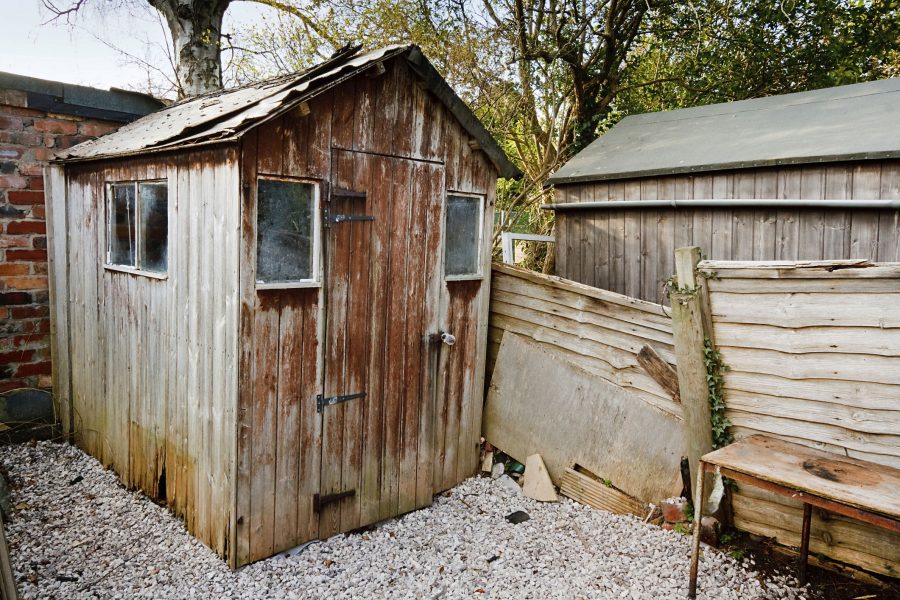Shed loads of space
You might not be spending much time in the garden in winter’s bad weather, but that doesn’t mean you can’t be spending time in your garden shed, argues Julia Gray
Garden sheds don’t have the most inspirational image: somewhere to dump unwanted DIY materials, unwashed garden tools and (but for that one sunny day of summer) unused outdoor furniture.
But it’s time for an image overhaul, because with a bit of work and imagination, sheds can be a perfect solution to lack of space inside your home.
As long as a garden shed is easily accessible from the house and (preferably) has electricity, a water supply and insulation, there is no reason it can’t be used as an extension of your normal rooms.
Because it’s separate from the main house, it has the added bonus of being an ideal place to do quiet (or noisy) activities, with many people opting to turn a shed into a workroom/studio, music or games room, home office, gym, or playroom/den – pretty much whatever you need, in fact.
Fitting out your shed with everything required to make it usable and comfortable won’t necessarily be cheap, but it will undoubtedly be cheaper than moving home.
You can convert an existing shed, or buy one tailored to your needs, complete with all mod-cons. Specialist companies produce off-the-shelf and bespoke designs, including much more contemporary garden buildings than traditional-looking ones, with everything included for a fully functioning room.
While you may not have the budget for a garden room, which can cost thousands of pounds, a bog-standard shed is much more affordable. Sheds are usually wooden, though they can be metal, which are often easier and quicker to build, tend to be better value for money, and need very little maintenance. Wooden sheds, on the other hand, must first be treated with wood preserver (unless they’re pre-treated) and a garden-wood stain or paint, and then maintained with more coats from time to time to prevent the wood from rotting and warping.
Metal sheds are more resistant to fire, rodents and insects than wooden ones, although they can be less able to withstand storms and high winds, are noisy when it’s raining, and are hot inside in summer and cold in winter.
Wooden sheds generally look more attractive too, and because they’re made of a natural material, they blend into the garden better. It’s also easy to jazz them up – garden-wood paints have come a long way since brown was the only choice, and you can make quite a statement with colour. Stripes, for example, are brilliant for a beach-hut effect, while cream and pastel greens and blues are perfect for a pretty, but not too jarring, pop of colour.
All sheds need a firm base, typically paving stones or a concrete slab, but wooden sheds should come with their own floor, whereas metal sheds usually have the concrete or paving base as the floor, so it’s essential to get it the right size. It’s certainly possible to lay the base and build the shed yourself if you’re an experienced DIYer, but novices may struggle. An easier option is to get a gardener or builder to do it for you, although this can be expensive, especially with a large shed.
If you live in a flat or maisonette, or a house that’s had permitted development rights removed, planning permission is required to put up a garden shed – incredible as it might seem. For information on planning rules and building regulations for garden buildings, click on the interactive house’s shed at www.planningportal.gov.uk.
Do you have a garden shed? What is it used for?
Latest posts by Sally - Silversurfer's Editor (see all)
- Graham Norton’s funniest interviews - April 2, 2025
- How to help hay fever sufferers make Springtimemore comfortable - April 1, 2025
- Win a cruise of your choice with Fred. Olsen Cruise Lines - April 1, 2025
- Win a 2025/26 Ashes Experience for Two! - April 1, 2025
- Win ONE of THREE pairs of tickets for BBC Gardeners’ World Live at the NEC Birmingham - April 1, 2025





















